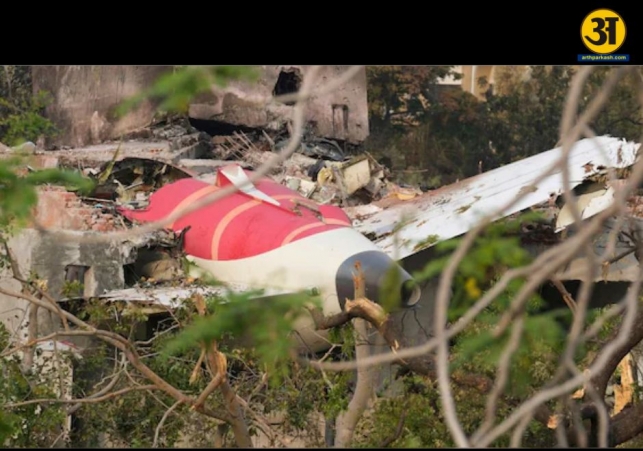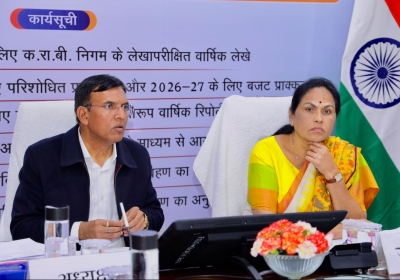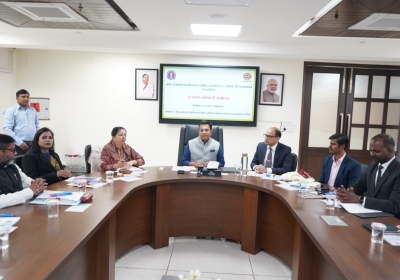
AI-171 black box damaged, may go abroad for probe
Ahmedabad plane crash: AI-171 Black Box severely damaged, may be sent abroad for analysis
The black box of the Air India flight AI-171, which crashed in Ahmedabad on June 12, has been recovered but is damaged, officials said. Reports suggest that the data from the black box may now have to be sent abroad, possibly to the United States, for a full investigation.
The aircraft involved in the crash was a Boeing 787-8 Dreamliner. It was flying from Ahmedabad to London’s Gatwick Airport. Just moments after takeoff, the plane crashed into a medical college hostel building in Ahmedabad’s Meghani Nagar area, killing almost everyone on board and 33 people on the ground.
The black box, which is not actually black in colour but bright orange, was found 28 hours after the crash. The delay happened because the device was hidden deep in the debris. The black box includes two separate tools: the Cockpit Voice Recorder (CVR) and the Flight Data Recorder (FDR).
Why the Black Box matters
The black box is the most important tool in finding out what caused the crash. It stores both cockpit conversations and technical data about the flight. However, this one has suffered physical damage, and experts believe that full data recovery may not be possible in India.
If needed, the device will be sent to the National Transportation Safety Board (NTSB) in Washington, DC, which has advanced technology to retrieve data even from damaged black boxes. Indian officials will accompany the equipment if it is sent abroad, to ensure security and transparency during the investigation.
This is not the first time black boxes have been sent outside the country. In cases where a black box is too damaged for Indian labs to read, it is routine to involve international agencies with better infrastructure.
The final decision on sending it to the US will be taken by the Indian government.
Flight AI-171 took off from Sardar Vallabhbhai Patel International Airport in Ahmedabad at 1:39 pm on June 12. It was scheduled to fly to London Gatwick. But within less than 600 feet of altitude, the aircraft showed signs of stalling. Just 36 seconds into the flight, a distress call was made to Ahmedabad Air Traffic Control (ATC). After that, radio contact was lost.
Seconds later, the plane crashed into the BJ Medical College hostel complex, which is located near the airport’s northeastern boundary. The crash caused a huge fire and resulted in a tragic loss of lives. Of the 242 people on board, only one person survived — a British-Indian man seated in 11A.
The crash also killed 33 people on the ground, mostly students and hostel staff. Emergency services rushed to the site, but the damage was already extensive. The event is one of the deadliest aviation disasters in recent Indian history.
What does the Black Box contain?
Though called a "black box," the device is painted bright orange to make it easy to find among wreckage. It consists of:
-
The Cockpit Voice Recorder (CVR) – records audio inside the cockpit, including conversations, alert sounds, and communication with Air Traffic Control.
-
The Flight Data Recorder (FDR) – logs key data like altitude, speed, heading, engine status, and more than 25 hours of aircraft performance data.
In this particular aircraft, the CVR may only hold the last two hours of cockpit audio. This is because the plane was delivered in 2014, and older CVRs store less data than the newer 25-hour models required after a 2021 global rule update.
The data from these devices can give clues to:
-
What was said in the cockpit before the crash.
-
Whether any alarms or warning signs were triggered.
-
What exactly the pilots and systems were doing in the final seconds.
This information is critical in finding out why the aircraft crashed and whether it was due to mechanical failure, human error, or other factors.
ALSO READ: PM Modi gifts Kashmiri silk carpet to Cyprus President, silver clutch to First Lady
Importance of a Detailed Probe
Aviation experts have stressed that understanding what went wrong is not just important for this case but also for preventing future crashes. That is why the Indian government is likely to approve sending the black box abroad, despite the cost and complexity involved.
Only a thorough investigation can explain:
-
Why the aircraft lost lift during takeoff.
-
What caused the distress call within 36 seconds.
-
Whether there was a technical fault in engines, sensors, or control systems.
As of now, no official cause has been confirmed. Some early reports suggest a possible engine malfunction or navigation error, but these remain unconfirmed. The Ministry of Civil Aviation has urged people not to spread speculation until a full technical report is released.
Survivor’s account and investigation
The only survivor, whose name has not been made public, is said to be recovering in hospital. He reportedly had a window seat near the wing. His survival is being called a miracle, and investigators are expected to take his statement as part of the inquiry.
The Air Accidents Investigation Bureau (AAIB), which reports to the Ministry of Civil Aviation, is leading the official investigation. It is working in coordination with the Directorate General of Civil Aviation (DGCA), Boeing, and possibly the US Federal Aviation Administration (FAA).
The Indian aviation sector has seen steady improvements over the years, but this crash has raised serious concerns about aircraft checks, air traffic management, and pilot readiness.
The crash has caused deep sorrow across India and among Indian communities abroad. Social media is full of tributes to those who lost their lives. Many people are demanding answers and accountability.
Family members of the victims are waiting for the final crash report, which may take weeks or even months to complete. They are also calling for better passenger safety protocols, more regular aircraft inspections, and transparency in reporting aviation incidents.
Aviation unions have also asked for pilot health checks, review of air traffic response times, and an audit of airline maintenance records.
If the black box is sent to the United States, it will likely go to the NTSB headquarters in Washington, DC. There, it will be examined using special tools that can recover data even from heavily damaged units.
Once the data is retrieved, it will be shared with the Indian authorities. A final accident report will then be prepared by the AAIB. This report will include:
-
A timeline of events
-
Data analysis from the black box
-
Weather, air traffic, and flight conditions
-
Possible causes and safety recommendations
This report will be made public, so that lessons can be learned and aviation safety can be improved.





